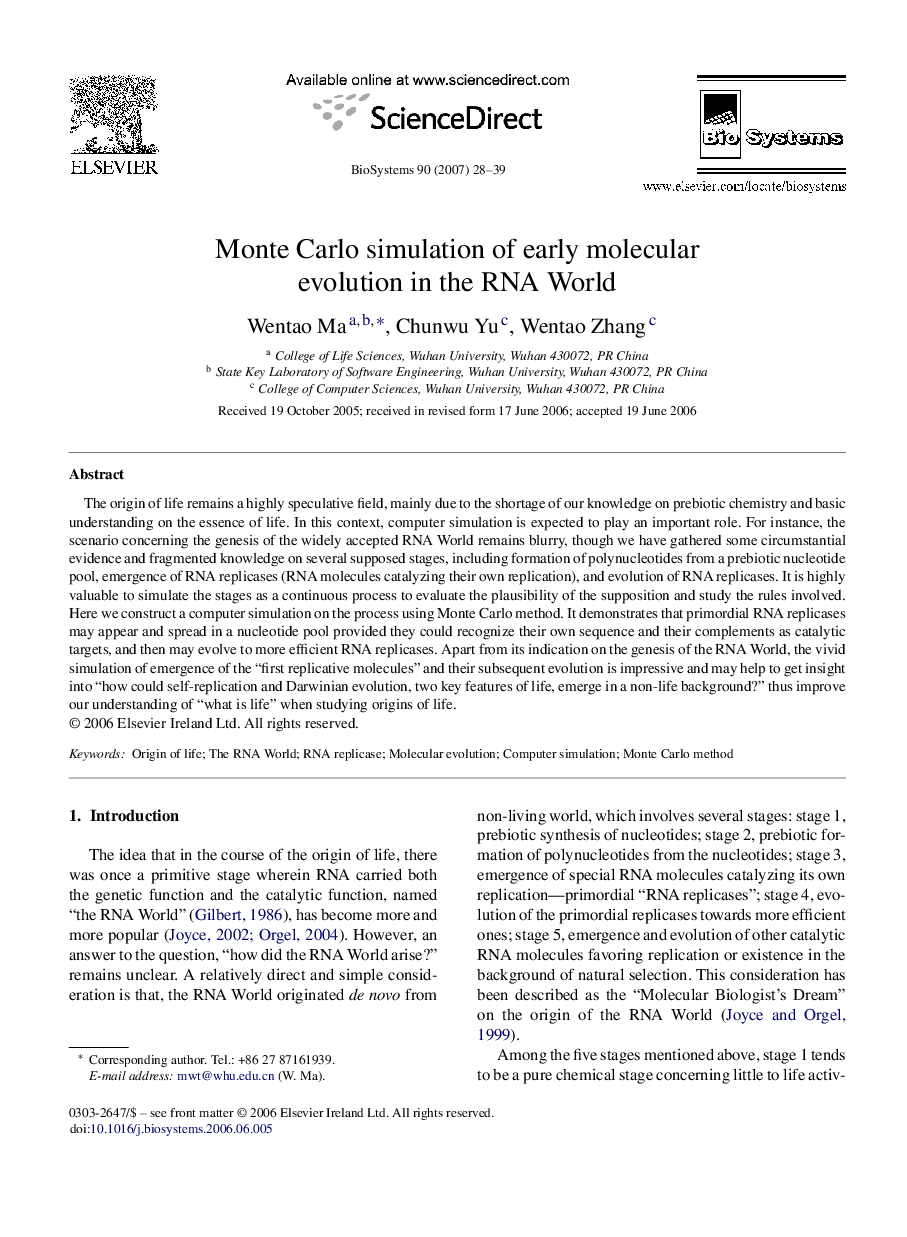| Article ID | Journal | Published Year | Pages | File Type |
|---|---|---|---|---|
| 2076816 | Biosystems | 2007 | 12 Pages |
The origin of life remains a highly speculative field, mainly due to the shortage of our knowledge on prebiotic chemistry and basic understanding on the essence of life. In this context, computer simulation is expected to play an important role. For instance, the scenario concerning the genesis of the widely accepted RNA World remains blurry, though we have gathered some circumstantial evidence and fragmented knowledge on several supposed stages, including formation of polynucleotides from a prebiotic nucleotide pool, emergence of RNA replicases (RNA molecules catalyzing their own replication), and evolution of RNA replicases. It is highly valuable to simulate the stages as a continuous process to evaluate the plausibility of the supposition and study the rules involved. Here we construct a computer simulation on the process using Monte Carlo method. It demonstrates that primordial RNA replicases may appear and spread in a nucleotide pool provided they could recognize their own sequence and their complements as catalytic targets, and then may evolve to more efficient RNA replicases. Apart from its indication on the genesis of the RNA World, the vivid simulation of emergence of the “first replicative molecules” and their subsequent evolution is impressive and may help to get insight into “how could self-replication and Darwinian evolution, two key features of life, emerge in a non-life background?” thus improve our understanding of “what is life” when studying origins of life.
